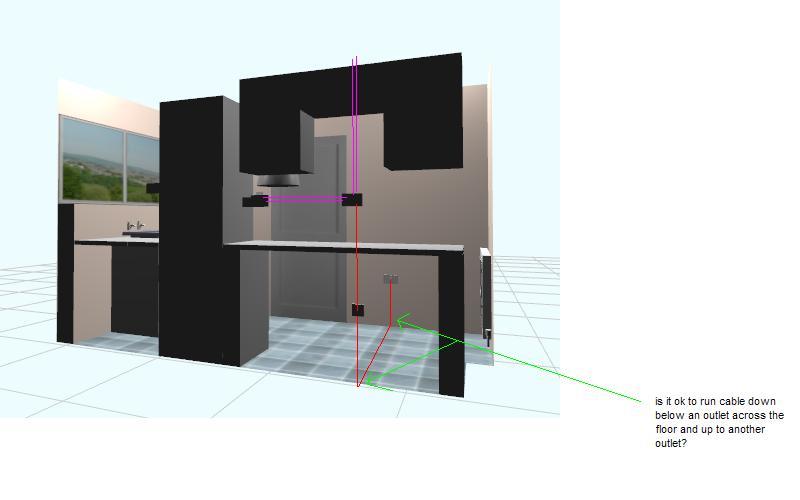Quick question on wiring. Is it allowed to run a cable as shown by the red line? Ring main is in pink - the idea is to get a socket outlet on the other side of the room as there aren't any in that bit, and it'd be a lot easier than going all the way around the wall (I'm not sure how safe that would be anyway?!). I presume I'd need to either blank off the existing single socket and join the cables or I guess I could turn it into an accessible FCU for the socket on the other side of the room? Floor is concrete, so it would be chased in (in conduit) and covered with screed.
Thanks
Tom
Thanks
Tom



